This article was originally published in the CODART eZine, no. 3 Autumn 2013
On 14 October 2013, on the occasion of CODART’s fifteenth anniversary symposium, Rudi Ekkart interviewed CODART’s founding director, Gary Schwartz, about his reasons for founding a network of curators of Dutch and Flemish art. The following is a report of that interview, interwoven with two texts by Gary Schwartz that shed even more light on the beginnings of CODART.
Gary Schwartz is known, among many other things, as a prominent Rembrandt scholar and a publisher. More importantly in this context, he founded CODART in 1998 and served as its director for over seven years, after which he continued to work as our webmaster until early 2009. Born in Brooklyn, New York, Schwartz moved in the 1960s to the Netherlands, where he found his two great loves: Dutch art and his wife, Loekie. After working for decades in art history and publishing, he became the founder of our now indispensable network.
Rudi Ekkart, an eminent and prolific art historian and specialist in Dutch portraiture, was director of the RKD (Netherlands Institute for Art History) from 1990 to 2012. He is now a pioneer of the Karel van Mander Institute. Rudi has been part of CODART since its inception and served on its board for many years.
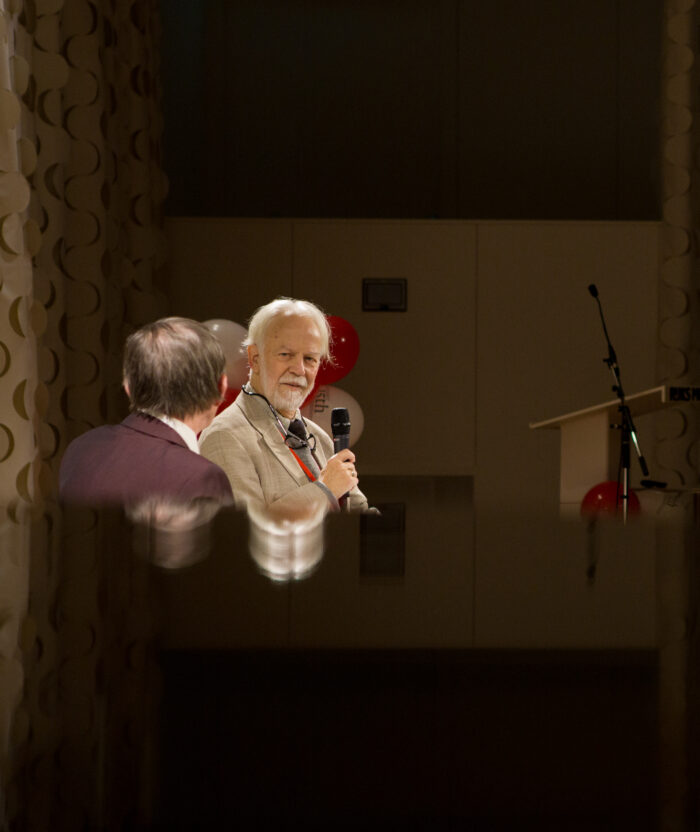 Rudi: Gary, fifteen years ago you founded CODART; the first public event was the memorable 1998 congress held at the Mauritshuis. Looking at the list of 225 participants of the present symposium, I noticed only about twenty people who have been members of our organization from the very beginning. So I think it would be useful to go back to that unforgettable start of CODART, especially to the period just before the first congress. But before we speak about that period of incubation in 1997-1998, I’d like to ask you about the experiences that prompted you to create this splendid organization.
Rudi: Gary, fifteen years ago you founded CODART; the first public event was the memorable 1998 congress held at the Mauritshuis. Looking at the list of 225 participants of the present symposium, I noticed only about twenty people who have been members of our organization from the very beginning. So I think it would be useful to go back to that unforgettable start of CODART, especially to the period just before the first congress. But before we speak about that period of incubation in 1997-1998, I’d like to ask you about the experiences that prompted you to create this splendid organization.
Gary: Well, I’ll be happy to tell you about that. I’m going to go back a long way, because there’s a lot of autobiographical information that is relevant, not only to my own history, but also to similar experiences that I’m sure many CODART members had early on in their lives. One important thing was being born in a place called Brooklyn, which we were told was a Dutch name, living in streets with names like Van Sicklen, Van Sinderen and especially Hendrix, which turned out to be the name of my partner in life and also my partner in the founding of CODART. Loekie has contributed not only interest and support to all my undertakings – it’s impossible to go far in ambitious projects without the support of one’s partner – but she has contributed immensely to this particular project through her own knowledge and her talent for getting along with people. So I’d like to thank her right now, because she deserves a large share of the credit.
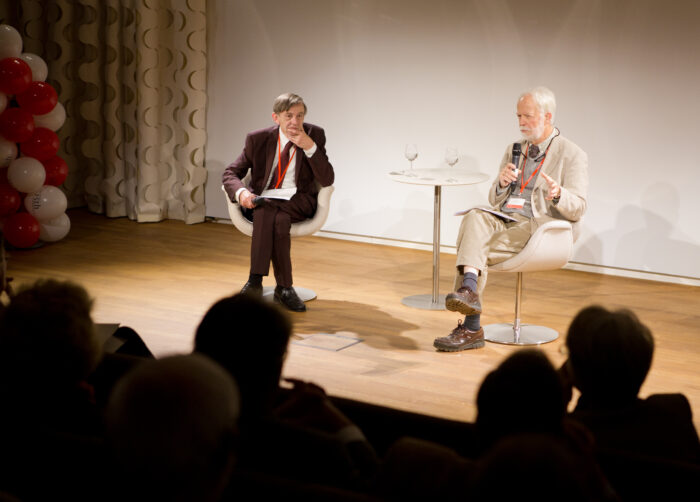 The first art exhibition I remember visiting was when my mother took me to the Metropolitan Museum of Art in 1949 to see the great Van Gogh exhibition, a must-see event that electrified the city. I’m not sure if I realized that it was Dutch, yet it is one of the experiences that shaped my feelings about Dutch art. But I first became aware of the phenomenon that prompted my creation of CODART when I started going to European museums – that was in 1959 – and noticed that all the museums I visited, no matter where they were – Germany, Spain, Italy, France – had galleries full of Dutch paintings. I soon realized that if I wanted to see the general offerings of a museum, I had to save the Dutch rooms for last, because I couldn’t tear myself away from them. This was a sign of things to come. My acquaintance with the curators in charge of those collections came about more slowly. One of the early events that made an impression on me was traveling in 1970 to Hungary – again with my mother, who was born there – and visiting the Museum of Fine Arts in Budapest, where we met Susan Urbach and Terèz Gerszi, who remembered that visit by a young art historian more than thirty years later when I came into contact with them again. This kind of early, personal connection gave me a feeling for the people in charge of collections.
The first art exhibition I remember visiting was when my mother took me to the Metropolitan Museum of Art in 1949 to see the great Van Gogh exhibition, a must-see event that electrified the city. I’m not sure if I realized that it was Dutch, yet it is one of the experiences that shaped my feelings about Dutch art. But I first became aware of the phenomenon that prompted my creation of CODART when I started going to European museums – that was in 1959 – and noticed that all the museums I visited, no matter where they were – Germany, Spain, Italy, France – had galleries full of Dutch paintings. I soon realized that if I wanted to see the general offerings of a museum, I had to save the Dutch rooms for last, because I couldn’t tear myself away from them. This was a sign of things to come. My acquaintance with the curators in charge of those collections came about more slowly. One of the early events that made an impression on me was traveling in 1970 to Hungary – again with my mother, who was born there – and visiting the Museum of Fine Arts in Budapest, where we met Susan Urbach and Terèz Gerszi, who remembered that visit by a young art historian more than thirty years later when I came into contact with them again. This kind of early, personal connection gave me a feeling for the people in charge of collections.
A source of inspiration from the center of the field came from my close ties to Horst Gerson, former director of the RKD. Of all his many accomplishments as a scholar and an organizer, the one I remember with the greatest warmth is his institution in 1948 of a program called the summer courses, which were held throughout the 1950s and early 1960s. He was able to bring young art historians and curators, especially from Eastern Europe, to the Netherlands, creating events in their lives and bringing them into contact with an international network that a lot of them never forgot. Many of the early CODART meetings were filled with people who had attended Gerson’s summer courses. When I worked with Gerson as an editor and research assistant for his book on Rembrandt paintings in 1968, I had no idea that I would be stepping into his shoes one day, acting as a facilitator for East/West encounters, but when it did happen it meant all the more to me.
My acquaintance with you, Rudi, goes back to the Frankfurt Book Fair, where you used to come around as the director of Meermanno Westreenianum, now the Museum of the Book, always looking for recent worthwhile publications and buying books from Uitgeverij Gary Schwartz. My work as a publisher could well be described as co-publishing, which meant that I was always working with other publishers with similar interests in various countries. This in turn made it necessary to acquire a feeling for building up networks, for putting together constellations of people from different countries who were working on the same material. This and the practical nature of work in publishing, including marketing – getting it out, selling it – helped me a great deal when I began to push CODART, attempting to sell it to the Dutch government, to Flanders and to prospective members.
Rudi : Is this a good moment to talk about the actual founding of CODART?
Gary: First let me pay tribute to Robert de Haas and Gijs van Tuyll, because I worked with them in the Rijkdienst Beeldende Kunst, the predecessor to the institution with which I set up CODART, the Instituut Collectie Nederland (ICN). I served in the 1980s on Gijs van Tuyll’s sounding board for taking Dutch art abroad. He was working on contemporary art but I kept pushing the old masters. I had a plan, which never came to fruition, to stimulate representatives from Dutch museums and other cultural and government institutions to get in touch, when traveling abroad, with local curators in order to present to the local public a particular work of art that had been purchased for their museum from the Netherlands. This could be done informally, for anyone who would show up and listen. It didn’t happen at the time, but it still could.
CODART is also greatly indebted to Lia Gorter and her Foundation for Cultural Inventory. The ties Lia established for us in Eastern Europe turned out to be one of CODART’s most important features.
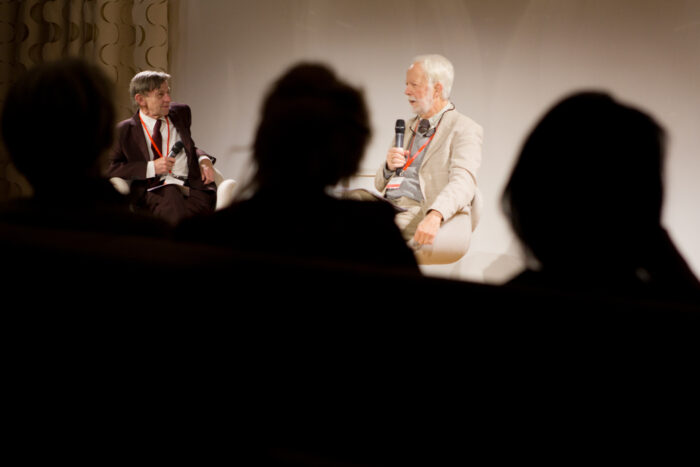 Rudi : Well, I think we have to move on to the actual creation of CODART, so I’d like to ask you to tell us about the approximately nine months – from the spring of 1997 to the beginning of 1998 – in which you conceived and eventually gave birth to the child that would be named CODART.
Rudi : Well, I think we have to move on to the actual creation of CODART, so I’d like to ask you to tell us about the approximately nine months – from the spring of 1997 to the beginning of 1998 – in which you conceived and eventually gave birth to the child that would be named CODART.
Gary : Well, I had been walking around with the idea to do something – either as a publishing project or a media project – with the huge group of curators of Dutch and Flemish art spread all over the world, perhaps in the form of a series of articles in a weekly newspaper or as a series of television programs, but it didn’t click.
Interlude 1
One of those projects concerned the curators of the most important collections of Dutch art that I knew. It seemed like a good idea to interview them about their work and have these interviews filmed by a crew of the quality that produced the kind of documentaries I liked best. I would ask all the curators the same questions and compare their answers as I went along, ending with a cumulative portrait of the Dutch and foreign curators of Dutch art. I saw this as a series of programs for Dutch and hopefully international television. The curators I had in mind administered world-class collections full of iconic artworks known to the public, but they themselves, although familiar names to colleagues in the field, were largely unknown to museum visitors and television viewers. How nice it would be to film Irina Sokolova in the Hermitage, Arthur Wheelock in the National Gallery of Art, Karl Schütz in the Kunsthistorisches Museum, Jan Kelch in the Gemäldegalerie in Berlin and other colleagues of their stature.
As I was working on my list of names and questions, I had occasion to meet a distinguished and influential Dutch journalist, Joop van Tijn, who became editor-in-chief of the weekly Vrij Nederland in 1991. Van Tijn also had extensive experience in television. Revising my plan slightly, I suggested to him that we put together a series of curator interviews in print for Vrij Nederland and on film for television. He was attracted by the idea, but immediately began worrying about the expense. Doing his calculations on the back of a napkin during a lunch in Keyser, which was still the place in Amsterdam for discussing high-class cultural projects over a shrimp croquette, he decided before the coffee that it couldn’t be done.
When I saw in May 1997 that the Netherlands had put together a new institution, a successor to the Rijksdienst Beeldende Kunst called Instituut Collectie Nederland, I thought, “Well, here is a conceptualization of all the artworks and cultural heritage in the country being thought of as one set. The people who came up with that idea should also be capable of conceptualizing all of Dutch art outside the country as one set.” I instantly had the idea to approach the people who had thought up the ICN. The new director of the institute was Rik Vos, and we soon agreed that this was a good idea. In fact, it was such an obvious idea – creating a platform for curators of Dutch art worldwide – that after I left with the green light to go ahead with it, I got really nervous. Rik and I both thought the plan so obvious that it must already exist. I called Walter Liedtke in New York and asked him if the curators of Dutch art in America had any kind of organization or standing body. Did they get together at College Art Association meetings or museum conventions? He said no, he had never heard of anything like that. So I went ahead with the full support of the Instituut Collectie Nederland. At the time I spoke to you, Rudi, because the RKD was of course an obvious partner for something like CODART. I also spoke to Ronald de Leeuw, director of the Rijksmuseum, which has always been a great patron of CODART. At that time, both of you agreed that the Instituut Collectie Nederland would be a better partner because it was new, its plans were still fluid, it had funding, and it showed interest in the project. So between May 1997 and January 1998 we put together the basis of CODART.
Interlude 2
An important moment for talking to potential participants was the opening of Albert Blankert’s Rembrandt exhibition at the National Gallery of Victoria in Melbourne, Australia in the first week of October 1997. Preceding the opening, the museum had organized a large-scale symposium, to which they invited numerous specialists. Curators from the lending museums also took part in the event. For several precious days I was able to consult informally with key figures about the organization that I believe had already been baptized CODART – expanding on Loekie’s suggestion of CODA (Curators Of Dutch Art), which was already taken many times over – a name that, miraculously, was still available.
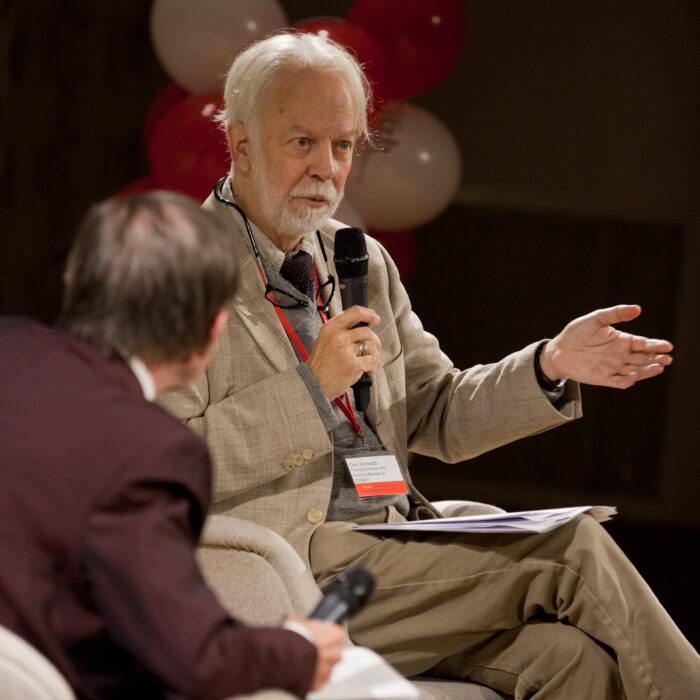 Now my idea was to link CODART congresses to exhibitions or other events concerned with the worldwide dissemination of Dutch and Flemish art. We also planned to hold our congresses during TEFAF – The European Fine Art Fair, held every March in Maastricht – which was attended by so many potential members. As it happened, an exhibition was to take place in the Mauritshuis and the Historical Museum in The Hague in March 1998 on the collections of the House of Orange, a perfect subject, but we didn’t get started with CODART operations until January 1998, and it seemed too short a time to organize our first congress. So I said to Rik, “This would have been a nice event to latch on to, but it’s only two months from now. So let’s look for a likely event in 1999.” He said: “No, we’re not doing that, we’re starting in 1998,” and he gave me nine weeks to put together the first meeting at the Mauritshuis. Frits Duparc generously put the Gouden Zaal at our disposal, and so, in early January 1998, I sent out invitations to about 200 people, whose names we had put together from the International Directory of Arts and from our own circle of acquaintances, asking them to come to a meeting, to take place only a few weeks later, of an institution which no one had ever heard of and which had yet to be officially founded. On that morning we stood nervously in the entrance to the Mauritshuis as sixty-five people from sixteen countries showed up. After that I no longer had to explain anything to Rik Vos or the ministry; everyone was convinced that we were on to a good thing, and this has been proved once more by your coming here today in such large numbers.
Now my idea was to link CODART congresses to exhibitions or other events concerned with the worldwide dissemination of Dutch and Flemish art. We also planned to hold our congresses during TEFAF – The European Fine Art Fair, held every March in Maastricht – which was attended by so many potential members. As it happened, an exhibition was to take place in the Mauritshuis and the Historical Museum in The Hague in March 1998 on the collections of the House of Orange, a perfect subject, but we didn’t get started with CODART operations until January 1998, and it seemed too short a time to organize our first congress. So I said to Rik, “This would have been a nice event to latch on to, but it’s only two months from now. So let’s look for a likely event in 1999.” He said: “No, we’re not doing that, we’re starting in 1998,” and he gave me nine weeks to put together the first meeting at the Mauritshuis. Frits Duparc generously put the Gouden Zaal at our disposal, and so, in early January 1998, I sent out invitations to about 200 people, whose names we had put together from the International Directory of Arts and from our own circle of acquaintances, asking them to come to a meeting, to take place only a few weeks later, of an institution which no one had ever heard of and which had yet to be officially founded. On that morning we stood nervously in the entrance to the Mauritshuis as sixty-five people from sixteen countries showed up. After that I no longer had to explain anything to Rik Vos or the ministry; everyone was convinced that we were on to a good thing, and this has been proved once more by your coming here today in such large numbers.
Rudi : Thank you, Gary. You seem happy to have welcomed sixty-five people back then, so you must be delighted by CODART’s huge expansion into a network with hundreds of members from over fifty countries. Of course you were well aware of the many Dutch and Flemish collections all over the world, but I think that even you must be surprised sometimes at the number of museums that have small – and often not so small – collections of Dutch and Flemish art and are interested in joining CODART.
Gary : I’m flabbergasted, and it’s still going on. Last week Tom van der Molen and I both discovered, independently, a museum in France in a town whose name I can’t remember [Remiremont, ed.], whose website boasts about its collection of Dutch paintings. Rudi, I hope you remember that meeting in your office when we pulled out a sheet of paper to make a list of all the curators we knew: Walter Liedtke, John Walsh, Arthur Wheelock, Karl Schütz, the usual people, and our list grew to include twenty-six names. How could either of us have possibly imagined over five hundred members in more than fifty countries? It was inconceivable and it is wonderful to see it happen.
Rudi : I must say that, like you, I’m always surprised by how many museums feel strongly about the fact that they have a Netherlandish collection. That’s interesting. One important thing I wanted to ask you is this: we are now looking back at fifteen successful years, but when we speak to each other again at CODART’s twenty-fifth anniversary, what new developments do you hope to see between now and then, both within and perhaps alongside CODART?
Gary : Well, I’d like to see the fulfillment of the promise of CODART, because it’s still a promise, to offer extra tools and extra leverage to its members, and I’d like to see them taking advantage of these opportunities – being able to communicate with each other this way, being able to draw on resources from the Netherlands, from Flanders – to provide a powerful stimulus to the presentation of Dutch and Flemish art at their own institutions. I would like to see stronger signs of how CODART members make use of what the network has to offer. I’d like to see more public attention in all those countries, even just in terms of acknowledging in exhibition catalogues the extent to which CODART has contributed to its members’ success in bringing together materials for exhibitions and events.
I would also like to see local governments around the world becoming aware of what Netherlandish art contributes to their culture, an expansion of awareness. For example, when Loekie and I visited the opening organized by Daiga Upeniece of the glamorous new museum that now occupies the old Stock Exchange in Riga, I would have liked it if Riga’s alderman for culture had known about CODART and had called upon us to put our resources at their disposal. This would expand the scope of CODART from a closed professional group to a wider network, spreading from one concentric circle to the next, the way Beijing expands when its current space is filled up. So in ten years’ time I would love to see the network’s events being attended by audiences in the countries we reach out to.
Rudi : Well, of course there’s always one problem we run up against – we see it with the congress too – and that is the growing number of participants. If we try to broaden the circle, perhaps it will be necessary to hold future CODART meetings in a football stadium. Or do you think we should organize smaller, separate meetings?
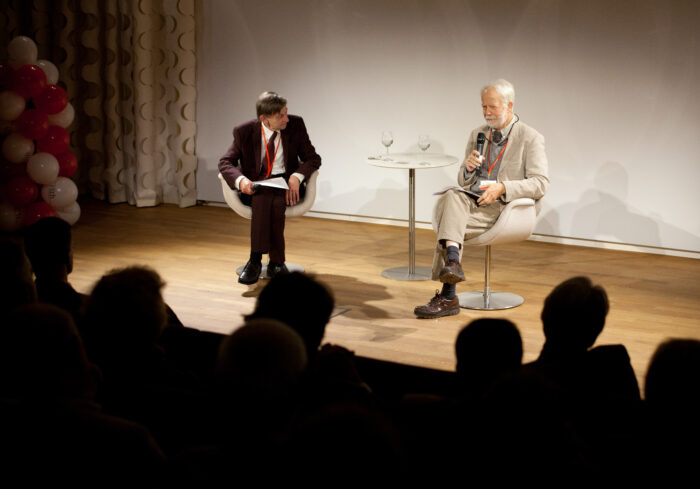 Gary : Gerdien Verschoor has been so much more successful in bringing in the masses than I was that this is indeed a problem. How many people attended the last CODART congress that I presided over? Maybe it was a hundred, but now she actually has to impose limits. People had to be turned away from this symposium. We must face the fact that we are not going to be able to maintain the intimacy of CODART’s early days, when study trips were organized that allowed us to view a private collection in Cologne in two groups of twenty people. Gerdien, however, has also put together some CODARTfocus meetings that can accommodate smaller groups in their entirety. I think that’s part of the answer. Another issue that is sometimes brought up as a problem is that CODART’s image is closely linked to collections of Golden Age painting. People ask, what about the nineteenth and twentieth centuries? The reply is that we never limited the membership in – or affiliation with – CODART chronologically or in terms of medium. Your field can be goldsmiths’ work, sculpture or manuscripts. But what we realized very quickly is that it wasn’t up to us to decide who should be interested in CODART; it was the network itself that would determine the nature of its membership. It was the people whose calling was “Curator of Dutch Art” or “Curator of Flemish Art.” The present membership is the network that formed itself most powerfully. Moreover, I don’t think that a person in charge of the nineteenth-century paintings in Paris would be thought of – or would think of him- or herself – as a curator of Dutch art, just because the Musée d’Orsay, for example, has nine paintings by Dutch artists on display. It’s like that in most museums in the world. We have to respect the interests and choices of the network itself.
Gary : Gerdien Verschoor has been so much more successful in bringing in the masses than I was that this is indeed a problem. How many people attended the last CODART congress that I presided over? Maybe it was a hundred, but now she actually has to impose limits. People had to be turned away from this symposium. We must face the fact that we are not going to be able to maintain the intimacy of CODART’s early days, when study trips were organized that allowed us to view a private collection in Cologne in two groups of twenty people. Gerdien, however, has also put together some CODARTfocus meetings that can accommodate smaller groups in their entirety. I think that’s part of the answer. Another issue that is sometimes brought up as a problem is that CODART’s image is closely linked to collections of Golden Age painting. People ask, what about the nineteenth and twentieth centuries? The reply is that we never limited the membership in – or affiliation with – CODART chronologically or in terms of medium. Your field can be goldsmiths’ work, sculpture or manuscripts. But what we realized very quickly is that it wasn’t up to us to decide who should be interested in CODART; it was the network itself that would determine the nature of its membership. It was the people whose calling was “Curator of Dutch Art” or “Curator of Flemish Art.” The present membership is the network that formed itself most powerfully. Moreover, I don’t think that a person in charge of the nineteenth-century paintings in Paris would be thought of – or would think of him- or herself – as a curator of Dutch art, just because the Musée d’Orsay, for example, has nine paintings by Dutch artists on display. It’s like that in most museums in the world. We have to respect the interests and choices of the network itself.
There is something I want to add, and that is Flanders, which in the beginning wasn’t part of the concept, because I was working with the Dutch government. However, that developed beautifully and I couldn’t be more pleased that at the very beginning of CODART Paul Huvenne expressed immense enthusiasm for the initiative and made a great effort to get the Flemish government and Flemish museums involved. It is wonderful for CODART that so many curators from Flanders are present today and that Thomas Leysen is now chairman of the board of the Friends of CODART. His vision of how CODART can go forward on a more public–private basis is very inspiring. The future of CODART depends on its success in establishing structural contacts between the Netherlands and Flanders, and on increased funding from private sources.
Rudi : Gary, thank you for telling us this story, and thanks, above all, for what you and Loekie have done for CODART.
Gary : Thank you!
